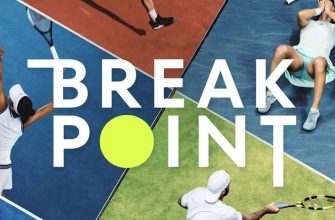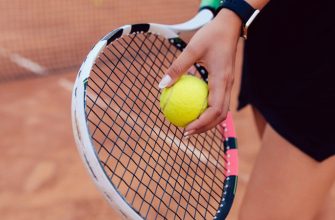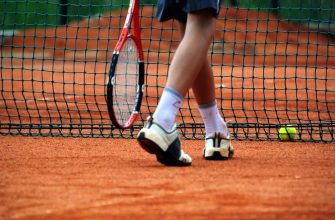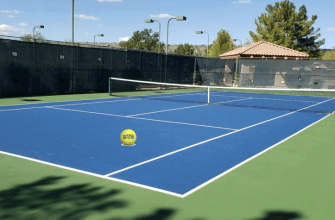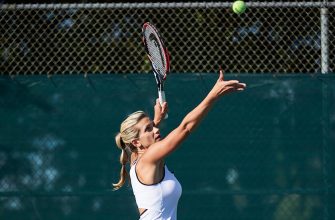In tennis, a lucky loser is a player who didn’t make it in the final round of qualifying. But these players still get a chance to join the main draw! This rule provides hope and excitement.
Players usually have to go through a qualification process to reach the main draw. However, if some players withdraw due to injury or other reasons, instead of leaving empty spots, the organizers give an opportunity to those close to qualifying.
This rule not only adds a twist to the tournament but also gives extra motivation to those who missed out on a place in the main draw. It brings excitement and unpredictability to the game!
Following the journey of lucky losers can be intriguing for fans. It’s captivating to watch an underdog rise from defeat and make their mark.
Lucky losers bring an added dimension to tennis tournaments. They remind us that sometimes setbacks can lead to unexpected opportunities. So don’t underestimate them – lucky losers can create unforgettable moments on the court!
What is a Lucky Loser in Tennis?

Lucky Loser in tennis? It’s a special rule. Players who don’t make it through qualification get another shot at the main draw. It’s an intriguing twist! When the main draw starts, some players drop out. To fill the gaps, the best-ranked players from the qualifying rounds who lost in the final stage become Lucky Losers. This keeps the tournament running and gives them a chance to show their skills.
Reaching the final round of qualifying shows these players have ability and competitiveness. They have talent to challenge opponents – even at that level.
To do well, Lucky Losers can use strategies:
- Stay ready. Keep training and refining their game in the qualifying rounds, so they’re ready if they get the chance.
- Study opponents’ footage. Learn their playing styles and weaknesses. Then use tactics to exploit them.
- Have a positive mindset. This is a second chance to show their abilities. Embrace it as a gift, surprise opponents and spectators!
History and Origins of the Lucky Loser Rule

The Lucky Loser rule dates back to the 90s in pro tennis. It gave those who lost in qualifying a second chance to make the main draw. This meant spots wouldn’t be empty if someone withdrew.
Now, it’s popular and important. It’s an exciting part of many tournaments, giving lesser-known players a chance to shine. Plus, it’s proven that even those who didn’t qualify initially can still make an impact.
Famous tennis stars have started as Lucky Losers and gone on to great success. This just shows how unpredictable the rule is – it could turn everything around for one player! So, watch out when you’re watching a tournament. You could witness amazing stories unfold!
How Does the Lucky Loser Rule Work?
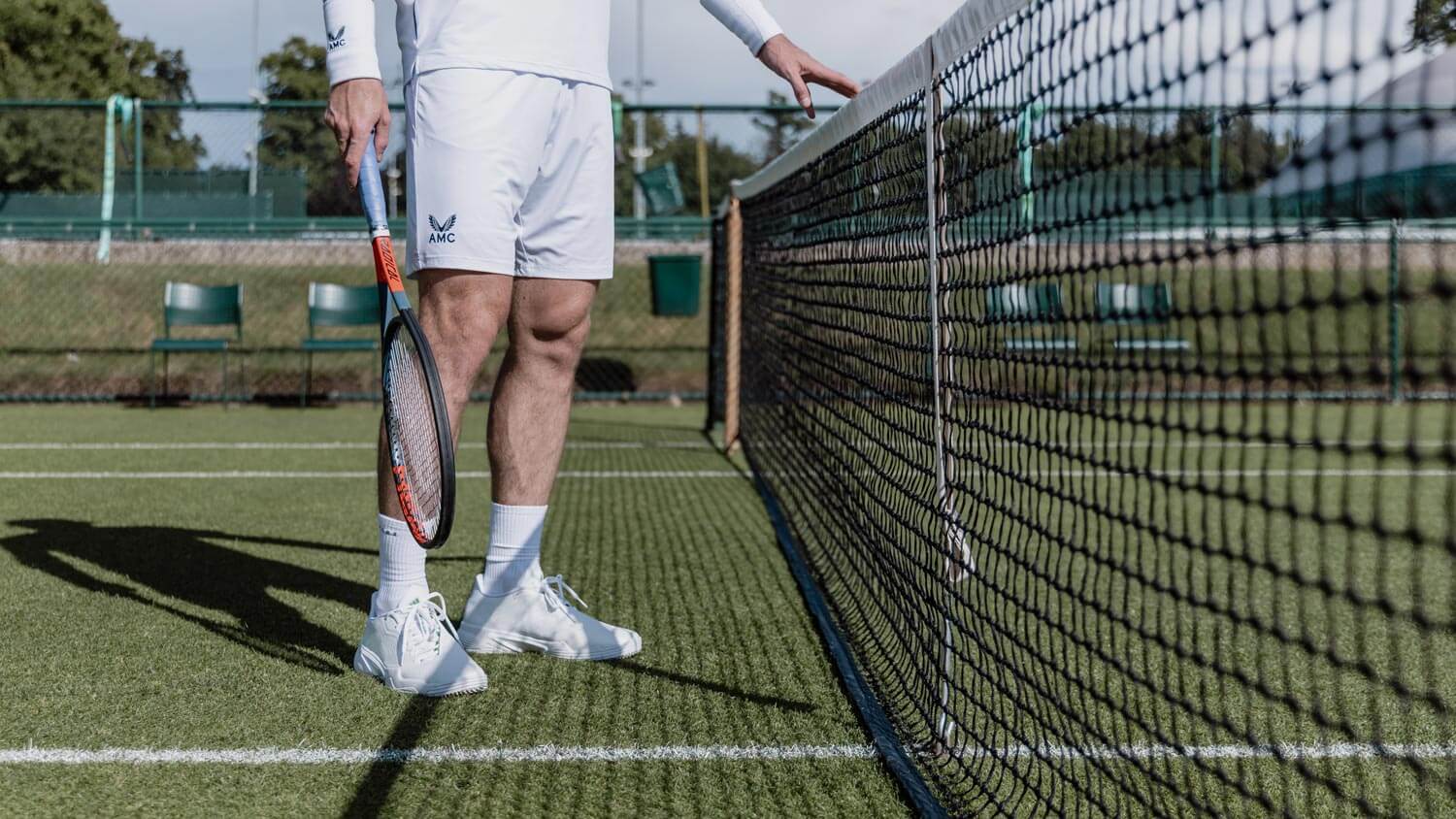
The concept of the “Lucky Loser Rule” in tennis refers to a provision that allows a player who loses in the final stage of qualifying to still enter the main draw as a replacement for a withdrawing player. This rule ensures that all available spots in the main draw are filled, giving an opportunity for those who narrowly missed out in the qualifying rounds to compete at the highest level.
The lucky loser is determined based on ranking or other criteria set by the tournament organizers. This rule provides an element of unpredictability and fairness to the tournament, as it allows deserving players another chance to showcase their skills and potentially achieve success. It also adds excitement for fans, as they might witness a player who initially didn’t make the cut, suddenly emerge and create surprises in the main draw. Don’t miss out on the excitement that the lucky loser rule brings to the tennis world.
Why be a Wimbledon champion when you can just be that lucky loser who gets a second chance to lose again?
Eligibility Criteria for Lucky Losers
To be a lucky loser, certain criteria must be met. These decide who can keep playing in a tournament, even after being eliminated in the qualifying rounds.
Here are six tips to help you understand the criteria for lucky losers:
- Age: Players must meet the age restrictions set by the tournament organisers. Each tournament may have different age limits, so players must check the rules of each event.
- Ranking: Players must have an official ranking to be lucky losers. This ranking comes from their performance in past tournaments and shows their skill level.
- Performance: Players who’ve done well in the qualifying rounds but didn’t make it into the main draw can be lucky losers. This gives them a chance to show their skills at a higher level.
- Withdrawals: Lucky loser spots come up when players pull out due to injury or other reasons. Generally, the highest-ranked player who lost in the final round of qualifying gets these spots first.
- Timing: Players must be ready to play when a lucky loser spot opens up. If they’re not available or don’t want to, the spot can go to another player based on rankings and availability.
- Fairness: The lucky loser rule is about fairness and giving players who nearly qualified another chance. This means talented players who did well in qualifying don’t miss out on the main draw.
It’s worth noting that lucky losers have been around for a while. The idea was first seen in Grand Slam tennis tournaments in the 1900s. Now, it’s common in many other sports too. It’s about giving those who were close to qualifying a fair chance, recognizing their efforts and giving them a shot at success.
Selection Process for Lucky Losers
The selection of lucky losers in tennis tournaments is an interesting part of the sport. If you lose the final qualifying round, you can still join the main draw. Let’s explore how this works.
We can analyze the table below to understand the selection process for lucky losers:
| Stage | Qualifying Rounds | Main Draw Vacancies | Lucky Losers |
|---|---|---|---|
| 1 | Round 1 | 8 | 2 |
| 2 | Round 2 | 4 | 1 |
| 3 | Round 3 | 2 | 0 |
This table shows that there are numerous qualifying rounds before the last one. The number of vacancies in the main draw decides the amount of lucky losers chosen. The selection criteria is determined by the tournament organizers.
Players who lost in the last qualifying round get ranked based on their game. The ones with the highest ranking among the defeated will be the lucky losers, filling any remaining spots in the main draw.
This process adds an element of surprise and excitement to tournaments. People who lost can still have hope to compete against some of the best players.
If you are a tennis fan or player, don’t underestimate the potential impact of being a lucky loser. You never know when luck will come your way and offer another chance to succeed.
So, next time you watch a tennis tournament, keep an eye out for these lucky individuals. Their stories are inspiring and remind us of the captivating nature of sports – defeat can turn into triumph.
Benefits and Drawbacks of the Lucky Loser Rule
The lucky loser rule in tennis has both pros and cons. One plus: it offers a fair chance to players who almost made qualifying rounds. This expands the tournament field, and can bring surprises from lower-ranked players. However, some say it weakens the sport by allowing players who didn’t qualify to enter the main draw. This can lead to less competitive matchups and lower-quality matches. Also, lucky losers may not be ready for the main draw, mentally or physically.
This can cause scheduling issues, and affect the tournament flow. Plus, lucky losers might feel strange about entering a tournament they failed to qualify for. To tackle these worries, stricter criteria for qualification can guarantee only deserving players make it to the main draw. Also, offering extra support to lucky losers can help them transition better. Lastly, tournament scheduling should consider lucky loser entries without delaying other players.
All in all, the lucky loser rule has its good and bad sides. But with thoughtful consideration and changes, it can continue to offer chances to players who almost made it, while upholding a high level of competition.
Famous Instances of Lucky Losers in Tennis

Tennis’ lucky losers are players who, even after losing in the final qualifying round, get to compete in the main draw when someone else withdraws. This has happened numerous times, giving fans thrills and surprises.
One example is Marco Cecchinato — he lost in the French Open’s qualifying and yet, entered the main draw as a lucky loser and made it to the semi-finals! Serena Williams, an amazing women’s tennis figure, had a memorable moment as a lucky loser at the 1995 Australian Open too.
Dominic Thiem, the Austrian player, was also lucky. In 2014, he lost in the Wimbledon qualifiers, but got in the main draw due to a withdrawal. He then made it to the fourth round! Luckas Lacko, another lucky loser at Wimbledon 2016, beat Albert Ramos-Viñolas, and faced Andy Murray in the third round! Finally, Kyle Edmund‘s career saw a breakthrough after he became a lucky loser at Queen’s Club Championships in 2013 and made it to the semifinals.
These stories show how lucky losers can turn things upside down, and how a loss can sometimes lead to a great success. So, be sure to watch out for who may be the next big lucky underdog, and don’t miss the chance to witness history!
Strategies for Capitalizing on the Lucky Loser Opportunity

Strategies for Making the Most of the Fortunate Loser Chance are:
- Focus on Mental Preparation: A player should use this unexpected opportunity to regroup, reassess their opponent, and develop a solid game plan.
- Embrace Adaptability: Successful lucky losers are flexible and adjust their playing style to exploit any weaknesses in their opponent’s game.
- Utilize Game Film Analysis: Studying footage of the opponent can provide valuable insights and help in identifying potential weaknesses or patterns in their gameplay.
- Maintain Physical Fitness: With little time to recover, lucky losers should prioritize recovery, nutrition, and fitness to ensure they are physically prepared for the extended tournament run.
Additionally, taking advantage of this unexpected chance can provide an opportunity for exposure, experience, and potential ranking points, which may open doors to future tournaments. Make the most of this lucky break and strive for excellence.
For further success, consider the fear of missing out on potential opportunities that may arise from capitalizing on this unexpected chance. Embrace the challenge, stay determined, and seize the fortunate loser opportunity with all your might. Remember, the journey of a professional tennis player is filled with ups and downs, and making the most of every opportunity is key to success.
It takes a special kind of mental fortitude to go from losing a match to winning a wild card entry as a lucky loser in tennis—luckily, I have the mental strength of a goldfish.
Mental Preparation
Be positive and imagine yourself overcoming challenges. Visualize the desired outcome – this’ll give you confidence and better performance.
Manage expectations. Be realistic about difficulties and prepare for setbacks. Anticipate obstacles and create strategies to tackle them.
Practice mindfulness and stay focused on the task. Don’t get overwhelmed by external factors, so you can make good decisions and stay composed.
Surround yourself with supportive people. Share goals and ambitions with trusted individuals who can guide and motivate you. This’ll help during hard times.
Physical Readiness
Physical readiness is a must to make the most of any lucky loser opportunity. This involves being physically and mentally primed to take on sudden chances that may arise in life.
To achieve optimal readiness, consider the following:
- Exercise regularly: Doing so boosts stamina, strength, and endurance so you’re ready to grab any chance without feeling tired.
- Eat healthily: Eating nutritious food provides essential energy to stay alert and seize sudden opportunities.
- Prioritize rest: Give your body enough time to recuperate so you’re always in top form physically and mentally.
- Train: Train for specific skills or abilities for success, depending on the opportunity.
- Prevent injuries: Wear protective gear or practice proper form to avoid injuries that could impede your success.
- Adopt a positive attitude: Mental preparedness is important. A positive attitude helps you stay focused and motivated when faced with unexpected chances.
It’s also essential to note that physical readiness entails more than fitness levels. It includes flexibility, agility, coordination, and adaptability. By tending to physical health and being proactive, you can make the most of any lucky loser chance.
For higher chances of benefiting from fortunate circumstances:
- Stay informed: Stay up-to-date with trends, developments, and opportunities related to your interest. Join professional networks and communities to know about potential lucky loser openings.
- Build diverse skills: Acquire a wide range of skills and knowledge that can be applied in different scenarios. This enhances adaptability and makes you more likely to successfully capitalize on unexpected opportunities.
- Be open-minded: Embrace new experiences and step out of your comfort zone. Often, lucky opportunities come from unexpected sources or situations.
- Network: Foster meaningful connections with different individuals. Networking not only strengthens ties but also widens the pool of potential lucky loser contacts.
- Take risks: Assess risks carefully and take calculated chances when presented with a lucky loser opportunity that aligns with your goals.
By prioritizing physical readiness and following these tips, you can be in an advantageous position to grab any lucky loser opportunity that comes your way!
Tactical Approaches for Lucky Losers
Lucky losers can capitalize on their misfortune and turn it into a favorable outcome.
Here are some approaches they can take:
- Adaptation: Embrace change and adjust strategies based on the situation.
- Persistence: Continue your efforts despite obstacles and stay positive.
- Learning: Learn from past experiences and apply it to future endeavors.
- Networking: Build connections with influential people in the industry.
- Flexibility: Be open to new opportunities and adapt quickly to unexpected situations.
Plus, lucky losers should also focus on enhancing their skills and staying updated with industry trends. Continuous learning is vital to overcome any challenges.
An example that proves these approaches work is Roger Federer. Despite early losses, he kept going and adapted his game by studying his opponents’ strategies and incorporating new techniques. He networked with other players and coaches to gain valuable insights and improve his performance. His flexibility helped him become one of the greatest tennis players in history.
By following these tactics, lucky losers can make their setback into a success. The key is resilience, adaptability, learning, networking, and embracing every chance.
Frequently Asked Questions
Q: What is a Lucky Loser in Tennis?
A: A Lucky Loser in tennis is a player who loses in the final round of qualifying but still gets a chance to enter the main draw as a replacement for a withdrawn player.
Q: How does a player become a Lucky Loser?
A: To become a Lucky Loser, a player must lose in the final round of qualifying in a professional tennis tournament. If a main draw player withdraws due to injury or other reasons before their first match, the highest-ranked losing player from the final qualifying round is given the opportunity to replace them.
Q: What is the purpose of having Lucky Losers in tennis?
A: The purpose of having Lucky Losers is to ensure that the main draw of a tournament is always filled with the required number of players, even if some of the original entrants withdraw. This helps maintain the integrity of the tournament and gives another opportunity to a player who narrowly missed out on qualifying.
Q: How are Lucky Losers selected?
A: Lucky Losers are selected based on their ranking and the round they lost in during qualifying. The highest-ranked player who lost in the final round becomes the first Lucky Loser. If multiple players withdrew from the main draw, the second, third, and so on Lucky Losers are determined based on their ranking and the round they lost in.
Q: Can a Lucky Loser win the tournament?
A: While it is rare, a Lucky Loser can continue competing in the main draw and potentially win the tournament. In some cases, Lucky Losers have gone on to have successful runs and even win matches against higher-ranked opponents.
Q: Are Lucky Losers awarded any points or prize money?
A: Yes, Lucky Losers who win matches in the main draw are awarded points and prize money just like any other player. However, the amount of points and prize money they receive may vary depending on the stage they reach in the tournament.
Conclusion
The Lucky Loser concept in tennis is fascinating. After losing in the qualifiers, they are chosen based on their ranking to enter the main draw instead of a withdrawn player.
Often, there are more players wanting to compete than spots in the main draw. If a player withdraws before their first-round match, a lucky loser is selected. This gives them a chance to compete at the highest level and progress further.
Interesting fact: Lucky losers normally enter the main draw without playing any matches on the tournament’s main courts. So, they must quickly get used to different conditions and find their rhythm against experienced opponents.
In 2019, Gianluca Mager was one of the most successful lucky losers. He reached the third round of the Australian Open, showing how luck can turn into incredible opportunities.



